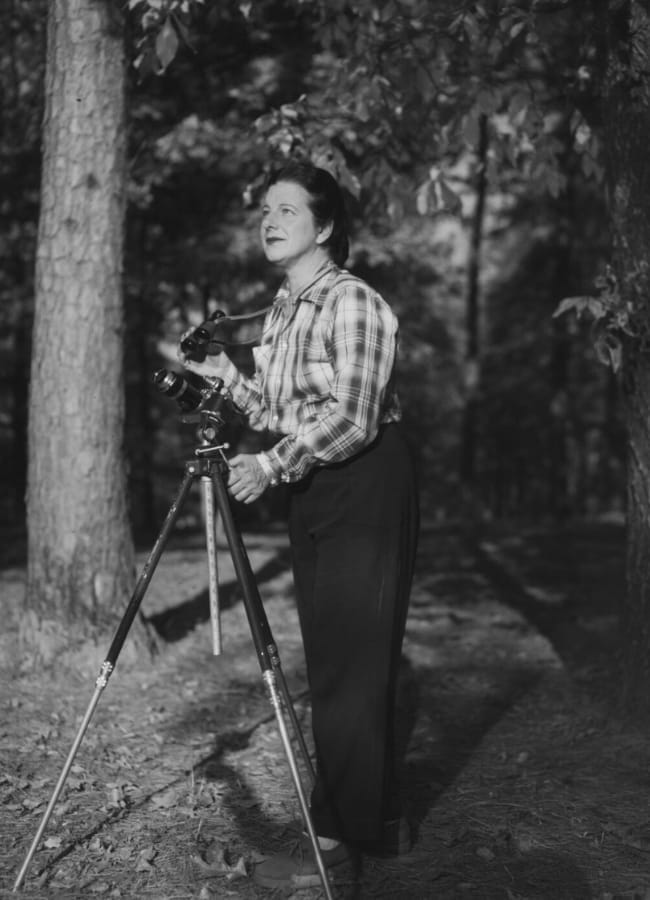

Uh oh...
It appears that you're using a severely outdated version of Safari on Windows. Many features won't work correctly, and functionality can't be guaranteed. Please try viewing this website in Edge, Mozilla, Chrome, or another modern browser. Sorry for any inconvenience this may have caused!
Read More about this safari issue.

As I navigated the corridors of the administration building at Ouachita Baptist University during my college days, I noticed the quiet brilliance of the framed photographs adorning the walls. There were birds mid-flight, blossoms caught in the morning light, and subtle, serene glimpses of nature that most people overlook. They weren’t just decorations—they felt personal and intentional. Curiosity got the better of me, and after asking around, I discovered that these images were the work of Thase Daniel, a globally recognized wildlife photographer.
At the time, I worked in recruitment and alumni relations, often buried in spreadsheets and event plans. Still, this discovery drew me into a completely different world, where a woman from El Dorado quietly captured the attention of international publications and nature lovers alike.

Who Was Thase Daniel?
Thase Christine Ferguson Daniel was born in 1907 in Pine Bluff, a town known for blues and business. But Thase’s legacy would be rooted in something far more delicate than booming sounds; her lens became a conduit for capturing the quiet magic of wildlife.
A graduate of Ouachita Baptist University, she lived a life that, at first glance, might not have predicted international recognition. She married Dr. R. Paul Daniel and spent much of her life in the boom town of El Dorado. Her patient eye and curiosity for the natural world propelled her to a different stage, far from the timberlands of the delta.
Thase’s story is remarkable because of the quality of her work and the period in which she accomplished it. In the mid-20th century, photography, especially wildlife photography, was primarily dominated by men. Thase not only carved out space in that world; she excelled in it.
What Was She Known For?
Thase Daniel had a knack for capturing what others overlooked: the stillness before a hummingbird hovers, the delicate arch of a wildflower, the morning dew on a leaf, and the quiet rhythm of nature’s daily dance. Her photographs were striking not because they were loud but because they were honest.
She became best known for her photographs of birds and flowers, subjects that may seem simple at first glance but transform into artful narratives through her lens. Her work was published in National Wildlife, Nature’s Best Photography, Birder’s World, Outdoor Oklahoma and Wildlife Conservation Magazine, among others.
Her photography was so admired that National Geographic and the Smithsonian Institution included her work in their archives. From the Arkansas Delta to the coast of South Africa, her photographs bridged borders and reminded viewers of the universal beauty of nature.

Where Did Her Work Appear?
Beyond the glossy pages of magazines, Thase’s work found homes in more personal spaces. Churches, schools, hospitals, and libraries all displayed her photographs. However, one of the most special displays is Cone Bottoms Hall at Ouachita, where her nature prints line the walls of administrative and academic buildings. The building, commissioned for the 1923 school year, served as a women’s dormitory for decades and was later converted into an administrative space in the late 1990s.
Her gift to the university wasn’t merely aesthetic; it was symbolic. It reminded students, faculty, and visitors that art and science, beauty and intellect, can and should coexist. Her images served as conversation starters, quiet muses, and small windows into the broader world.
In 1998, Ouachita hosted a gallery exhibition dedicated to her work, celebrating her role as an artist and a trailblazer. Her collection was later formally archived in the Riley-Hickingbotham Library, ensuring that future generations could study and be inspired by her vision and learn primary archival and storage practices in academic settings.

What Else Should You Know About Thase?
While she never sought the limelight, Thase’s quiet legacy has far-reaching ripples.
- She never used digital tools – she captured photos on film with patience and intention. Every shot demanded hours of waiting, watching, and understanding her subject’s natural rhythm.
- She was known to rise before dawn, set up elaborate blinds and perches to capture birds in their natural habitat, and sometimes wait all day for the perfect shot.
- She didn’t just take pictures of animals; she studied them. Her work was deeply rooted in respect for ecology and animal behavior. She respected their environment and didn’t disturb nature to capture her desired image.
- Thase also contributed to conservation awareness by showing people, through her lens, just how fragile and beautiful the natural world is.
Even today, her photographs are subtle calls to action for environmental awareness and appreciation.

Tips from Thase’s Legacy: Photographing Wildlife
Though she never published a guidebook, her career imparts wisdom to aspiring wildlife photographers:
- Patience is your greatest asset. Wildlife doesn’t pose for portraits. Stunning photos come to those who wait.
- Understand your subject. The best images develop from comprehending your subject’s behavior, habitat and rhythm.
- Use natural light. Thase preferred soft light during early mornings or late afternoons. Flash can startle animals and flatten your image.
- Don’t over-edit. She emphasized authenticity rather than manipulation, letting the beauty speak for itself.
- Make it personal. Thase’s used curiosity and care to drive her interests, not just a desire for acclaim. Let your passion guide your practice.
These are excellent tips for spring hikes and summer adventures. Make time to try them and continue learning more about natural habitats, quickly moving subjects, and perhaps even a summer scavenger hunt!

A Lasting Legacy
Thase Daniel passed away in 2006, but her work continues to speak for her. It whispers the story of a woman from El Dorado who dared to see the world differently and showed it to the rest of us. Her life reminds us that art doesn’t always have to be loud to be heard; it just has to be real.
In a world of Instagram filters and instant uploads, there’s something sacred about how Thase worked. Her legacy encourages us to slow down, look closely, and honor the quiet corners of the world that teem with wonder. Consider how differently we view downtown murals once we understand their origins.
So next time you see a bluebird flit across your backyard, a hovering hummingbird, a fluttering monarch, or a bloom opening under the morning light, think of Thase. Think of Arkansas. Think of the stories waiting to be captured and the people whose quiet lives change how we see the world. You may even have a budding photographer in your backyard.
Her memoirs and the Special Collections Department at Ouachita Baptist University’s Riley-Hickingbotham Library provided images throughout the article.
We do the work.
You check your email.
Sign up for our weekly e-news.
Get stories sent straight to your inbox!









Like this story? Read more from Keisha Pittman McKinney
At Christmas, a hotel lobby tree, a church pageant, and stopping at a...
Fayetteville has once again gained national attention as it hosts the...
Every year, millions watch as the White House transforms into a winter...
Join the Conversation
Leave a Comment